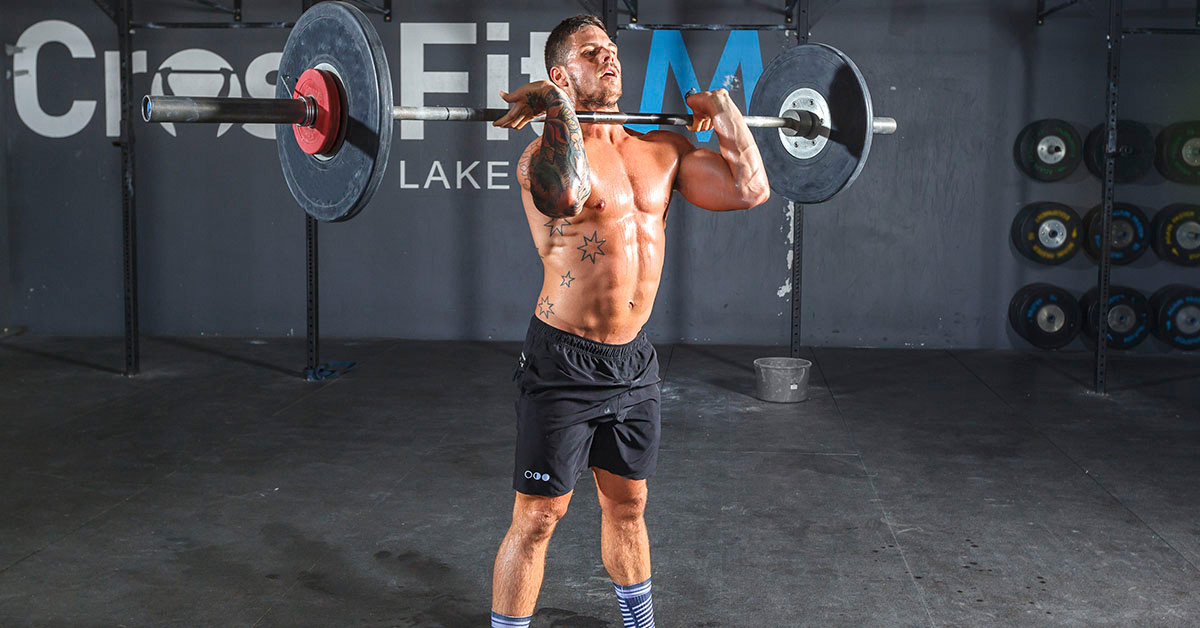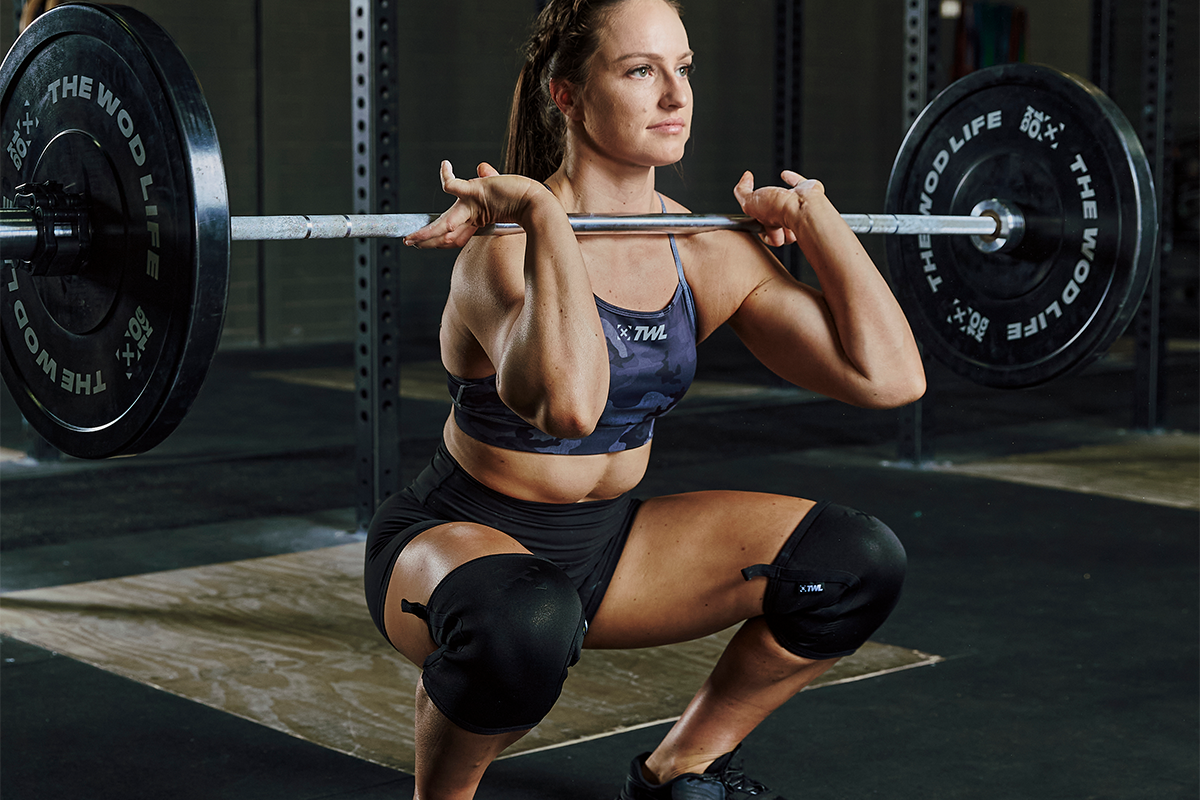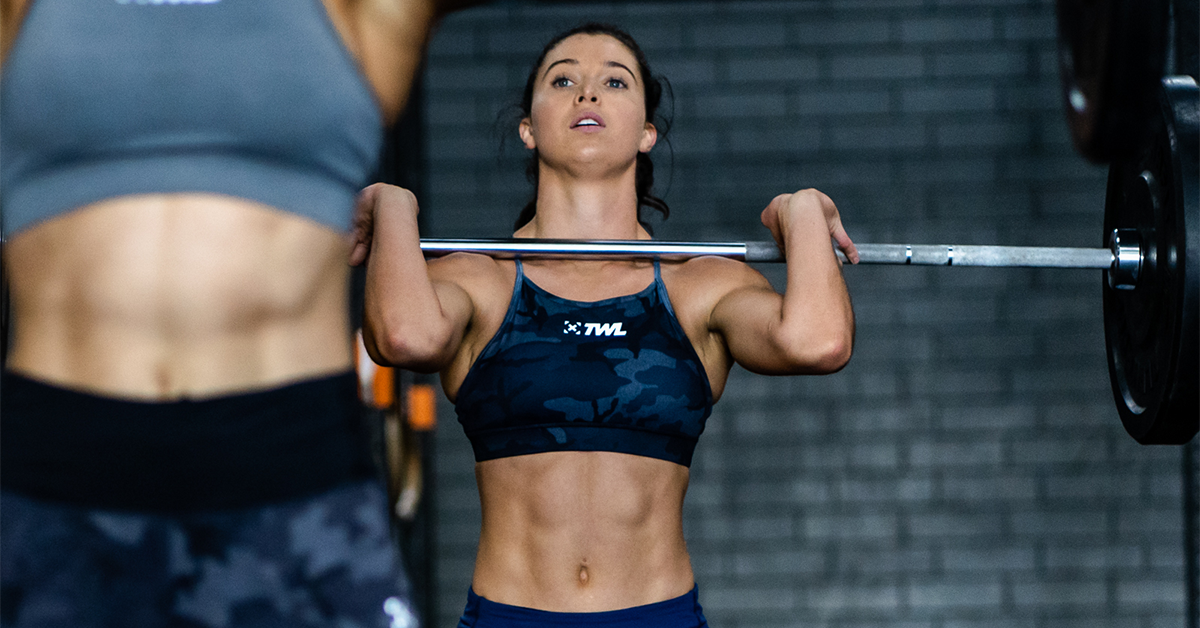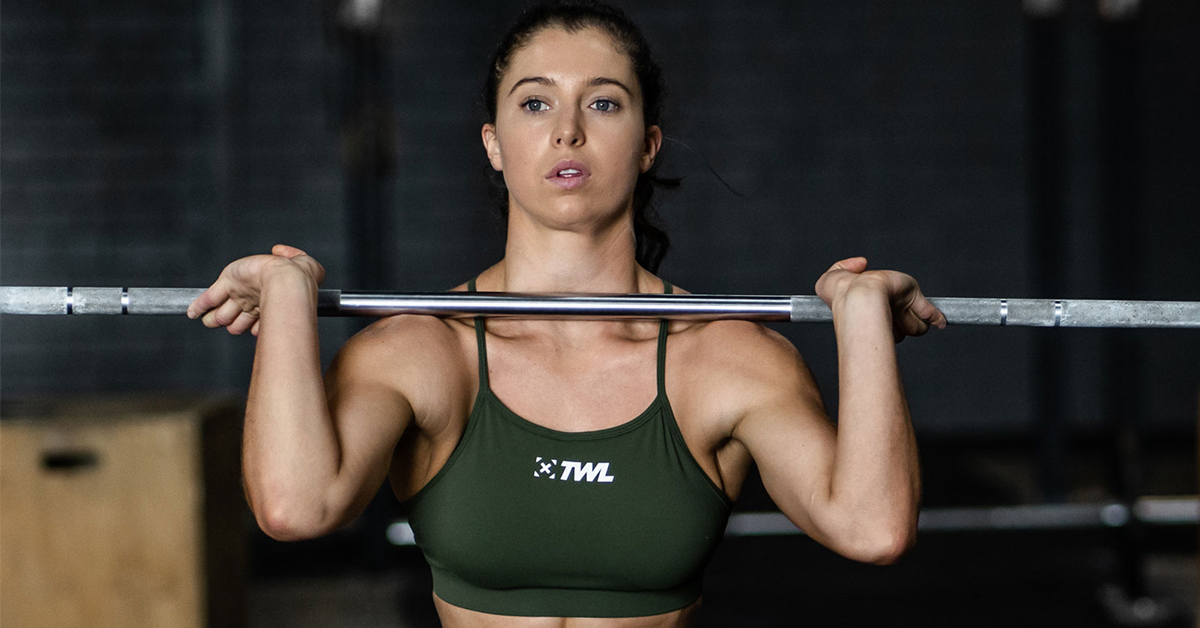“Elbows up!” “Tight core!” “Knees out!” “Chest up!” You have likely heard your coach booming one or all of these cues whilst you fight underneath that heavy front squat, clean, or jerk. Maintaining a strong front rack position is vital to be able to move big weights, maintain stability, and perform an efficient movement. But what if, no matter how hard you push your elbows up or brace your core, you still are not able to hold the ideal position?
The front rack position denotes the position you hold the bar in when preparing for a front squat, lunge, or overhead press. It’s also the catch position we take when performing a clean. The bar rests in front of the deltoids/neck, gripped in the hands with the elbows pointing somewhere around 90 degrees in front of the torso. Depending on mobility, the grip may be a full hand grip or resting in the fingertips, and the elbows can be anywhere from pointing to the ground to the ideal 90-degree position.

But what makes it hard to get you into this position? Thoracic, lats, triceps, shoulders, wrists, hips, and ankles all contribute to effective front rack positioning. Sounds like a lot of areas, right? Any limitation in one of these areas is going to make it more difficult to maintain a good and strong position.
Have poor thoracic extension? You will struggle with getting your elbows up. Tight shoulders? You might not have sufficient external rotation. Hip or ankle issues? Your knees may not track effectively over your toes and you lose your upright torso. Fret not because we’ve got a few tips for how to improve your front rack position.
4 Ways to Improve Your Front Rack Position
1. Activation
Pre-workout mobilisation can work wonders to help open up some of the necessary ranges of motion required for movements. Mobilising takes the required movement areas through the required ranges of motion and addresses limits in movement and performance. Essentially, it’s you telling your body how you want it to move.
Check out this easy front rack drill. Perform standing and at the bottom in either front or back squat rack. If you have lifting straps, use these for a tighter stretch.
https://www.youtube.com/watch?v=hh1Cfd7puNU&app=desktop
There’s also this mobilising flow from Alexey Torokhity.
TOP 5 stretching exercises for CLEAN
byu/TOROKHTIY_Aleksey inweightlifting
2. Soft-Tissue Manipulation
Soft-tissue manipulation, or self-myofascial release, is a type of bodywork effective in promoting muscular strength, flexibility, and ROM. Generally, the technique targets specific areas of tension within a muscle to release and allow the body to move more effectively. The most accessible tools for doing self-release are the lacrosse ball and the foam roller.
The peanut (two lacrosse balls attached together) provides a great tool to help release the thoracic.
3. Strengthening
Strengthening the muscles that help support the front rack is essential to develop a good position. This can include core and midline work, rotator cuff drills, and upper back strength.
Start by adding in some front rack holds at around or above your 1RM front squat.
Strengthening your rotator cuff tendons will also help provide stability when externally rotating your shoulders. Try these.
4. Static Stretching
Best-performed post-workout when your body is warm, static stretching can help pull your body past its normal range of motion. Target particularly the lats and triceps with bands, and open up the hips and ankles in the squat.

















